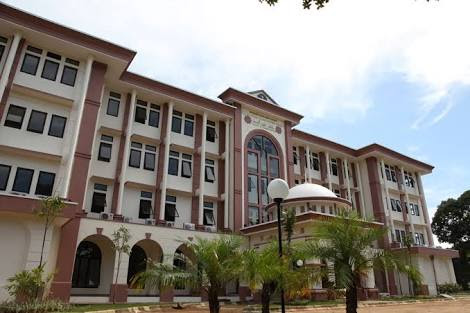DEVELOPING THE PROBLEM OF NUMERATION LITERACY WITH ISLAMIC CONTEXT
Abstract
This study aims to develop assessment questions or instruments to measure students' numeration literacy skills integrated with the Islamic context. The research was conducted through 4 stages: initial assessment, design, test making, and a study of problem items then limited trials and analysis. The instruments used include algebra and statistics by taking the Islamic context of zakat material. Experts validated the instrument, and the validation results were analyzed using Aiken's formula. The instrument was also tested online and limited to 22 students of grade 8 MTsN 1 Surabaya. The test results were analyzed using product-moment correlation to determine its empirical validity and used alpha Cronbach to determine its reliability. The results showed that the 6 questions developed are valid with a validity value of 0.783. This result is reinforced by empirical validity results that show that the instruments developed are valid in terms of material/content, construct, and language. The reliability test results using alpha Cronbach obtained the reliability coefficient is 0.72. The instrument developed in this research is expected to be one of the references of students in practicing their numeracy skills and preparing to face national assessments by the Ministry of Education. Because it was found in this study that students have difficulty answering the question of numeration literacy with Islamic context. This case shows that students' numeration literacy skills are still low.Downloads
References
Abidin, & Mulyati. (2018). Pembelajaran literasi: Strategi meningkatkan kemampuan literasi matematika, sains, membaca, dan menulis. Jakarta: Bumi Aksara.
Abidin, Y., Mulyani, T., & Yunansah, H. (2018). Pembelajaran literasi: Strategi meningkatkan kemampuan literasi matematika, sains, membaca, dan menulis (Cet. 2). Bumi Aksara.
Azwar, S. (2011). Reliabilitas dan validitas. Yogyakarta: Pustaka Belajar.
Fajriatin, A. (2015). Analisis buku siswa matematika kurikulum 2013 kelas IX bab sistem persamaan linear dua variabel berdasarkan konten pada kriteria Bell. Prosiding Seminar Nasional Matematika Da Pendidikan Matematika Universitas Negeri Yogyakarta, 71.
Fiangga, S., Amin, S. M., Khabibah, S., Ekawati, R., & Prihartiwi, N. R. (2019). Penulisan soal literasi numerasi bagi guru SD di kabupaten Ponorogo. Jurnal Anugrah, 1(1), 9–18. https://doi.org/10.31629/anugerah.v1i1.1631.
Gronlund, N. E., Linn, R. L., & Miller, M. D. (2009). Measurement & evaluation in teaching. tenth edition. New York: Macmillan Publishing Co., Inc.
Kartikasari, M., Kusmayadi, T. A., & Usodo, B. (2016). Kreativitas guru SMA dalam menyusun soal ranah kognitif ditinjuau dari pengalaman kerja. Prosiding Seminar Matematika Dan Pendidikan Matematika, 431–442.
Kurniati, A. (2015). Mengenalkan matematika terintegrasi islam pada anak sejak dini. Suska Jurnal Pendidikan Matematika, 1(1), 1–8. https://doi.org/10.24014/sjme.v1i1.1326.
Kusaeri, K. (2021). Literasi numerasi dalam asesmen kompetensi minimum. Naskah Sedaring Sosialisasi AKM Dan Survey Karakter Untuk Dosen Pembimbing KPL Dan Guru.
Kusaeri, Sadieda, L. U., Indayati, T., & Faizien. (2018). Developing an assessment instrument of high order thinking skills in mathematics with in islamic context. The 5th International Conference on Research, Implementation, & Education of Mathematics and Sciences.
Mahmud, M. R., & Pratiwi, M. I. (2019). Literasi numerasi siswa dalam pemecahan masalah tidak terstruktur. Kalamatika Jurnal Pendidikan Matematika, 4(1), 69–88. https://doi.org/10.22236/KALAMATIKA. vol4no1.2019pp69-88.
Plomp, T., & Wolde, J. V. (1992). The general model for systematical problem solving. from tjeerd plomp (eds.). Utrecht (the Netherlands): Lemma.
Plomp, Tj. (1997). Educational design: Introduction. From tjeerd plomp (eds). Utrecht (the Netherlands): Lemma.
Rakmawati, Y. (2019). Pengembangan reflective modul berbasis child friendly school untuk meningkatkan kemampuan literasi numerasi dan percaya diri pada siswa kelas V sekolah dasar. Universitas Negeri Yogyakarta.
Reynolds, C. R., Livingston, R. B., & Willson, V. (2010). Measurement and assessment in education. Second edition. Upper Saddle River, New Jersey: Pearson Education.
Setyosari, P. (2009). Metode penelitian pendidikan & pengembangan. Jakarta: Prenadamedia group.
Steen, L. A. (2001). Mathematics and numeracy: Two literacies, one language. The Journal of The Singapore Association of Teachers of Mathematics. Retrieved from http://www.asclegg.co.uk/downloads/maths/pisa/ Mathematics%2520and%2520Numeracy_Steen.pdf.
Sullivan, P. (2011). Teaching mathematics: Using research-informed strategies. Australian Council for Educational Research. Retrieved from https://research.acer.edu. au/cgi/viewcontent.cgi?article=1022& context=aer.
Syawahid, M., & Putrawangsa, S. (2017). Kemampuan literasi matematika siswa SMP ditinjau dari gaya belajar. Jurnal Tadris Matematika Universitas Islam Negeri Mataram, 10(2). Retrieved from https://www.jurnalbeta.ac.id/index.php/betaJTM/article/view/121.
Team GLN. (2017). Materi pendukung literasi numerasi gerakan literasi nasional. Jakarta: Tim GLN.
Wati, M., Sugiyanti, & Muhtarom. (2019). Analisis kemampuan literasi matematika siswa kelas VIII SMP Negeri 6 Semarang. Imajiner : Jurnal Matematika Dan Pendidikan Matematika, 1(5). https://doi.org/ 10.26877/imajiner.v1i5.4456.
Copyright (c) 2021 Maunah Setyawati, Habsanul Aisyah, Kusaeri

This work is licensed under a Creative Commons Attribution 4.0 International License.

